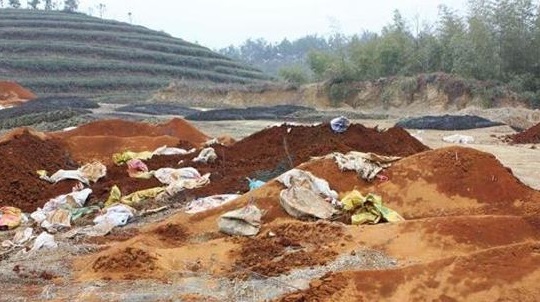Is the sludge hazardous waste? Many people have such doubts. Below we introduce the identification of four typical sludges for your reference.
(1) Electroplating wastewater and electroplating sludge with excessive heavy metals
Electroplating sludge is classified as hazardous waste, and the waste categories often belong to HW17, HW21, HW22, and HW23 at the same time. Electroplating wastewater with excessive heavy metals falls within the scope of wastewater pollution prevention and control and is included in wastewater management. It does not apply to the scope of the “Law of the People’s Republic of China on the Prevention and Control of Environmental Pollution by Solid Wastes” and is not classified as hazardous waste. Although the waste water exceeding the standard is not included in the management of hazardous waste, according to the “Two Highs Judicial Interpretation” (2016 edition), if the first type of heavy metal (such as lead, mercury, chromium, cadmium, arsenic) in the waste water exceeds the standard three times, or the second type of heavy metal (such as nickel) , Copper, zinc manganese, vanadium) exceeding the standard by more than 10 times, in addition to administrative penalties, will still be held criminally responsible.
(2) Sludge produced by domestic sewage treatment plant
It is solid waste, not hazardous waste. According to Document No. [2010] No. 157 of the Environmental Protection Office, in the process of transfer management of this type of waste, “refer to hazardous waste management and establish a sludge transfer order system.” Reference to hazardous waste management means that this type of sludge does not belong to Hazardous waste, but the management level should be improved, especially the ledger management should be strengthened to prevent dripping and illegal dumping during transportation. However, most of the sludge produced in the sewage treatment process of industrial enterprises should be classified as hazardous waste because of excessive leaching toxicity, or containing other toxic and hazardous substances and other hazardous characteristics. (The judgment method is mainly based on the enterprise environmental assessment, industry rules, and material Source, expert identification, attribute identification, etc.).
(3) Fly ash from incineration of domestic waste
Belongs to hazardous waste HW18. However, after meeting the requirements of Article 6.3 of the “Pollution Control Standards for Domestic Waste Landfill Sites” (GB16889-2008), landfills in domestic waste landfills will not be included in hazardous waste management; another situation is that after pretreatment, If the relevant requirements of the “Cement Kiln Co-processing Solid Waste Pollution Control Standard” (GB30485-2013) are met, the co-processing process is also included in the scope of exemption management.
(4) Sludge produced in the sewage treatment process of medical institutions
Most are hazardous waste. The Regulations on the Management of Medical Waste (Order No. 380 of the State Council) stipulates that “medical waste refers to the direct or indirect infectious, toxic, and other hazardous materials produced by medical and health institutions in medical treatment, prevention, health care, and other related activities. “Waste.” According to the “National Directory of Hazardous Wastes”, “Medical wastes are hazardous wastes. The classification of medical wastes is carried out in accordance with the “Medical Waste Classification Catalog.”” “Infectious waste” lists “other items contaminated by patient’s blood, body fluids, and excreta”. Screen slag, sedimentation sludge, and septic tank sludge produced in the sewage treatment process of medical institutions should be included in this category.
If a medical institution has specially designed the wastewater treatment process during the environmental assessment and has determined the attributes of the sludge, if the management department believes that this type of sludge should be included in the management of hazardous waste, it should be finalized through the hazardous waste identification process Discriminate.



